
by logisticsplus | Mar 30, 2023 | News
FOR IMMEDIATE RELEASE
Logistics Plus Joins the U.S.-Ukraine Business Council (USUBC)
With over 230 members, USUBC provides a strong international voice for business in Ukraine.
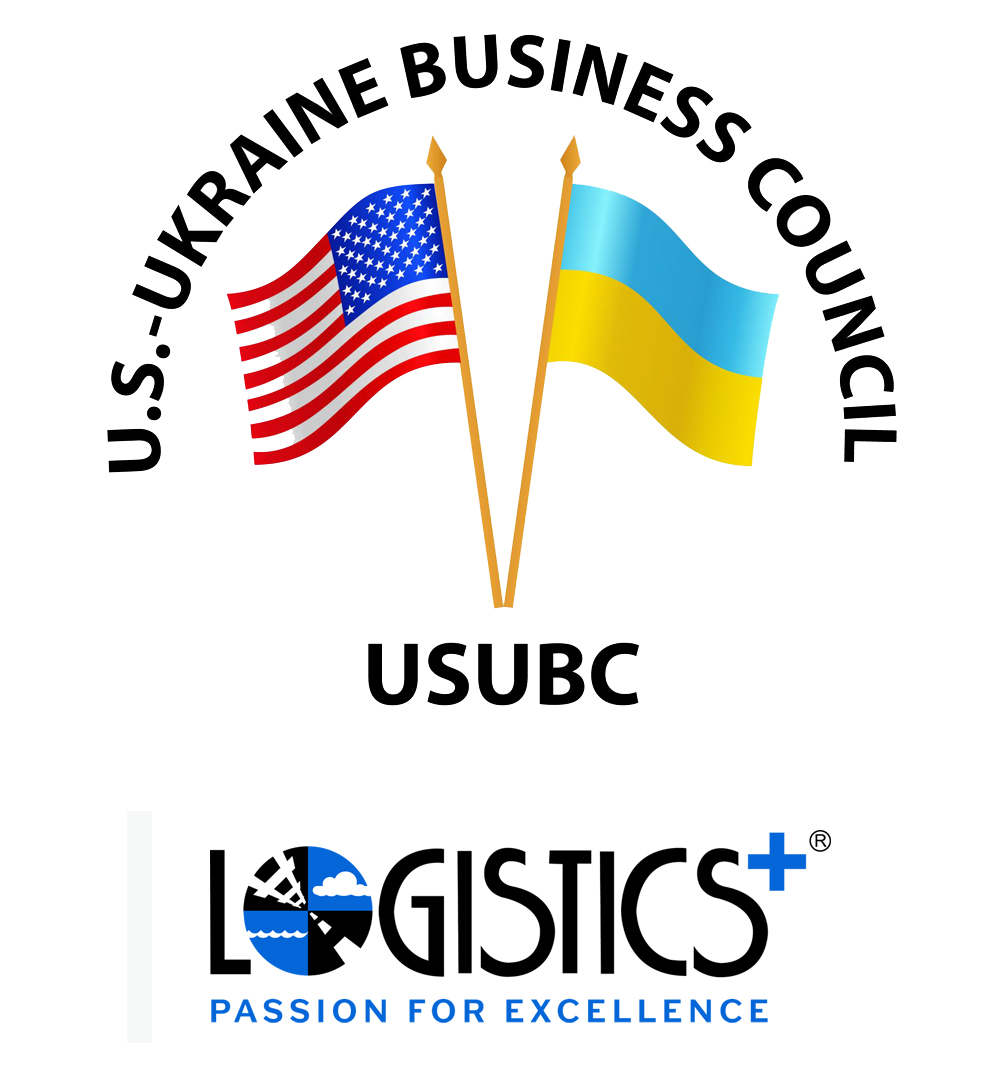 ERIE, PA (March 30, 2023) – Logistics Plus, Inc., a leading worldwide provider of transportation, logistics, and supply chain solutions, is pleased to announce it has been accepted for membership in the U.S.-Ukraine Business Council (USUBC) by its more than 230 members.
ERIE, PA (March 30, 2023) – Logistics Plus, Inc., a leading worldwide provider of transportation, logistics, and supply chain solutions, is pleased to announce it has been accepted for membership in the U.S.-Ukraine Business Council (USUBC) by its more than 230 members.
Logistics Plus (LP) is a global logistics company with annual sales of over $500 million and 1,000 employees in 45+ countries worldwide. LP established a presence in Ukraine in 2017 and now employs 70 people across offices in Kyiv, Odesa, and Ivano Frankivsk. Since the invasion in 2022, LP has directed over $1 million of its own capital into Ukraine, and it continues to spearhead far-reaching efforts to provide critical humanitarian supplies and materials to the country and front-line populations.
“We are excited to welcome Logistics Plus to the US-Ukraine Business Council (USUBC),” said Morgan Williams, President and CEO of the USUBC. “As a global logistics provider with operations in Ukraine, Logistics Plus brings valuable expertise. We look forward to working with them to help promote U.S.-Ukraine business relations.”
“We are honored to join the US-Ukraine Business Council and to collaborate with its distinguished members to promote and expand economic opportunities between the United States and Ukraine,” said Yuriy Ostapyak, Chief Operating Officer for Logistics Plus. “At Logistics Plus, we understand the importance of building strong relationships and investing in our global community, and we are committed to bringing our expertise to the table to support U.S.-Ukraine business relations.”
About the U.S.-Ukraine Business Council
The U.S.-Ukraine Business Council (USUBC) was established in October 1995 to advance U.S. companies’ trade and investment interests in Ukraine’s significant emerging market, advocate for measures to improve conditions for bilateral trade and investment, and generally promote strong, friendly bilateral ties. In support of its mission, the Council works closely with a full range of other organizations interested in supporting a growing commercial relationship between the United States and Ukraine. Visit usubc.org to learn more.



About Logistics Plus, Inc.
 Logistics Plus, Inc. is a 21st-century logistics company that provides freight transportation, warehousing, fulfillment, global logistics, business intelligence, and supply chain management solutions through a worldwide network of talented and caring professionals. Jim Berlin founded the company over 26 years ago in Erie, PA. Today, Logistics Plus is a highly regarded, fast-growing, and award-winning transportation and logistics company. With its trademark Passion For Excellence™, Logistics Plus employees put the ‘plus’ in logistics by doing the big things properly, plus the countless little things that ensure complete customer satisfaction and success.
Logistics Plus, Inc. is a 21st-century logistics company that provides freight transportation, warehousing, fulfillment, global logistics, business intelligence, and supply chain management solutions through a worldwide network of talented and caring professionals. Jim Berlin founded the company over 26 years ago in Erie, PA. Today, Logistics Plus is a highly regarded, fast-growing, and award-winning transportation and logistics company. With its trademark Passion For Excellence™, Logistics Plus employees put the ‘plus’ in logistics by doing the big things properly, plus the countless little things that ensure complete customer satisfaction and success.
The Logistics Plus® network includes offices, warehouses, and agents located in Erie, PA; Aurora, CO; Buffalo, NY; Charlotte, NC; Chicago, IL; Chino, CA; Cincinnati, OH; Cleveland, OH; Colton, CA; Dallas, TX; Dayton, NJ; Des Moines, IA; Fontana, CA; Haslet TX; Honolulu, HI; Houston, TX; Jamestown, NY; Laredo, TX; Lexington, NC; Los Angeles, CA; Meadville, PA; Miami, FL; New York, NY; Norfolk, VA; Olean, NY; Phoenix, AZ; Riverside, CA; San Francisco, CA; Tulsa, OK; Vancouver, WA; Australia; Belgium; Brazil; Canada; China; Colombia; Czech Republic; Egypt; France; Germany; India; Indonesia; Japan; Kazakhstan; Kenya; Libya; Malaysia; Mexico; Netherlands; Poland; Saudi Arabia; Singapore; South Africa; Taiwan; Thailand; Turkey; UAE; Uganda; Ukraine; and Vietnam; with additional agents around the world. For more information, visit www.logisticsplus.com or follow @LogisticsPlus on Twitter.
Media Contact:
Scott G. Frederick
CMO & LTL Carrier Relations
Logistics Plus, Inc.
(814) 240-6881
scott.frederick@logisticsplus.com
Click the image below to download the Logistics Plus logo:


by logisticsplus | Mar 28, 2023 | News
 Logistics Plus Chief Operations Officer (COO) Yuriy Ostapyak was the keynote speaker at Gannon University’s annual Business Day. This year’s Business Day was on Friday, March 24th, on Gannon’s main campus in Erie, PA.
Logistics Plus Chief Operations Officer (COO) Yuriy Ostapyak was the keynote speaker at Gannon University’s annual Business Day. This year’s Business Day was on Friday, March 24th, on Gannon’s main campus in Erie, PA.
As the keynote speaker, Yuriy discussed the background of Logistics Plus, the company’s service offerings, culture, community involvement, and more. Most importantly, Yuriy answered several questions from students regarding the essential qualities, traits, and characteristics the company looks for when hiring.
Photos from this year’s Business Day can be seen below.
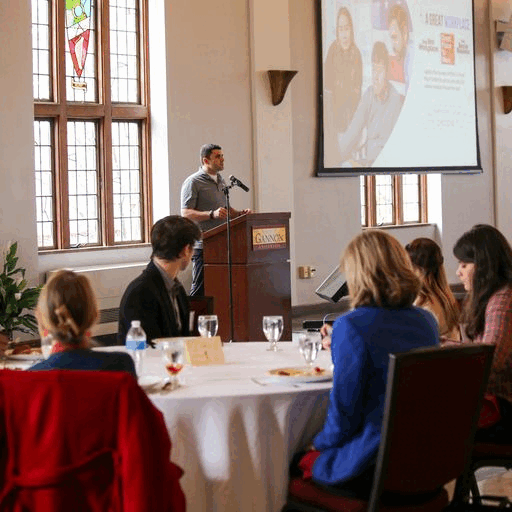

About Gannon’s Business Day
The Gannon University College of Business welcomes alumni, regional employers, and all students interested in learning more about business professions. The day includes panel discussions, a networking lunch, and on-campus interviews in the afternoon. Learn more at gannon.edu.

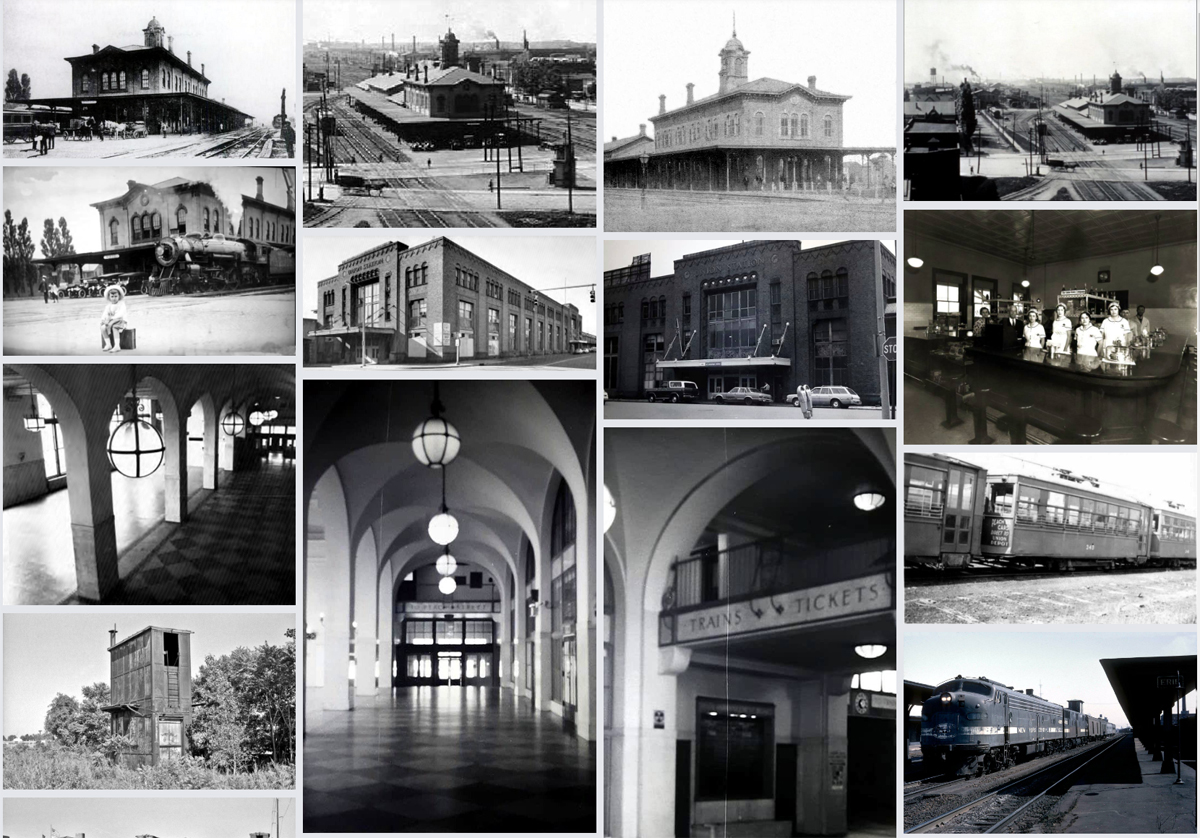
by logisticsplus | Mar 28, 2023 | News
We’d like to give a special thank you to the folks at Erie’s History and Memorabilia for documenting Erie’s rich history in photographs and stories. Check out this Facebook photo album of Erie’s history union train station, home to the Logistics Plus global headquarters since 2003. View the album and follow them online at https://www.facebook.com/eriehistorymemorabilia.
Here is a reprint of the entire story that is included with the album.
**************************
 The first railroad station in Erie was established in 1851, but it was soon replaced with a Romanesque-Revival style Union Depot that was built around 1865 at 14th Street between Peach and Sassafras Streets. Four railroads provided service: the Philadelphia and Erie Railroad and the Erie and Pittsburgh Railroad, which became parts of the Pennsylvania Railroad (PRR); and the Buffalo and Erie Railroad and the Cleveland and Erie Railroad, which became part of the Lake Shore and Michigan Southern Railway and eventually a part of the New York Central Railroad (NYC). In its heyday, the station served nearly 52 passenger trains a day. Before dining cars were common, passengers would off-board the train for extended stops at the station’s grand restaurant before continuing on their journeys.
The first railroad station in Erie was established in 1851, but it was soon replaced with a Romanesque-Revival style Union Depot that was built around 1865 at 14th Street between Peach and Sassafras Streets. Four railroads provided service: the Philadelphia and Erie Railroad and the Erie and Pittsburgh Railroad, which became parts of the Pennsylvania Railroad (PRR); and the Buffalo and Erie Railroad and the Cleveland and Erie Railroad, which became part of the Lake Shore and Michigan Southern Railway and eventually a part of the New York Central Railroad (NYC). In its heyday, the station served nearly 52 passenger trains a day. Before dining cars were common, passengers would off-board the train for extended stops at the station’s grand restaurant before continuing on their journeys.
The first station was demolished and replaced by a new depot, one that was redesigned in the Art Deco style of the 1920s by architects Alfred T. Fellheimer and Steward Wagner, the new station was dedicated and opened for business on December 3, 1927. Some of the features of the old station were replicated in the new design, such as the number of external panels and windows and the east facade of the building. The station had a hexagonal rotunda, which was the station’s waiting room with eight ticket windows and a baggage window. The main concourse was quite large and contained retail space, including a Union News outlet, a barber shop, and other concessions. The redesign was part of a project to raise the railroad right-of-way onto an embankment through the city to eliminate the many grade crossings. The station is remarkably intact; all of the original building is still in place. Recent restaurant and office development inside the building did not make any substantial structural changes to the station.
The original platforms were approximately 450 feet long, made of cast-in-place concrete, and were low-level, with nearly full-length butterfly-style canopies made of steel frames and wood roof decking. There were four baggage service elevators going from the baggage handling area to the platforms.
The NYC had four tracks (Tracks 1 to 4) on two island platforms, plus an express loading track adjacent to the station building and a run-through track between Tracks 1 and the express loading track. The PRR had two tracks (Tracks 5 and 6) on one island platform, plus a separate short platform for baggage, mail, and express handling. The tracks were located above grade, with a pedestrian subway tunnel providing access to the platforms via stairways to the platforms above. In 2001, Track 4 was turned over to the Norfolk Southern Railway (NS) as part of a track relocation project, which eliminated 1½ miles of NS street running trackage on 19th Street through the city. This operational change did not materially impact the station.
When the new station was opened in 1927, the NYC provided the majority of service. Trains went west to Cleveland, Toledo, Chicago, Cincinnati, and St. Louis and east to Buffalo, Albany, New York and Boston. The station was located on the NYC Chicago-New York main line, also referred to as the “water-level route.” The famous NYC 20th Century Limited ran through Erie Union Station every night at high speed but did not stop. In the 1960s, the NYC ran approximately eight trains a day in each direction through Erie. Many additional trains were run in the preceding years, particularly during World War II. This was gradually truncated to approximately four trains a day towards the beginning of Amtrak.
Conversely, the PRR ran trains south from Erie to Pittsburgh and southeast from Erie to Harrisburg, Philadelphia, and Washington. Service to Pittsburgh was discontinued in 1946, and service to Philadelphia was discontinued on March 27, 1965. In later years, PRR service consisted of only one train a day each way to Emporium, Pennsylvania, where the cars were connected to a Buffalo/Harrisburg train for the continued journey. The PRR train typically consisted of a baggage-RPO car, a coach, and a sleeper which was operated by the Pullman Company. The last PRR train was numbered No. 580 (southbound) and No. 581 (northbound).
While all NYC trains were run-through trains, the PRR had switching operations at the station because all of the PRR trains terminated and originated in Erie. Typically, a PRR switch crew would pick up the train and take it about a mile east to the former Ash Street Wye to turn the train so the seats were pointed in the facing direction of the train. The motive power would cut off and proceed east to the PRR engine terminal on 18th and Wayne Streets for servicing and turning. That was also the crew reporting location. At the station, the PRR had a Porter who cleaned out the train and prepared it for its return run. The PRR also had a steam boiler in the station manned by a full-time fireman to provide steam heat for the cars to keep them warm during the day in cold weather. Steam hoses were located in the center of the PRR station tracks for the connection to the cars. Lastly, since the Pullman Company operated the sleeping car service, there was likely an office space for Pullman employees to conduct their administrative business.
The level of passenger service continued after the Penn Central (PC) merger in 1968 between the PRR and NYC. PC later became Conrail in 1976, and in 1999 Conrail’s Erie operations became part of CSX Corporation. However, the PC trains only ran until the beginning of Amtrak in 1971. Prior to the start of Amtrak, PC was running approximately four trains per day. In spite of that, Amtrak reduced the service to one train a day serving Union Station between midnight and 6 AM, thus greatly reducing the quality and level of service. Shortly after that, the one train was discontinued, leaving the city of Erie without passenger service for several years. Service then resumed in 1975 with the Lake Shore Limited service, still serving Erie between two o’clock and seven o’clock AM. Currently, there are two trains each day, greatly underserving the potential travel market that may be available in Erie. Despite this, Union Station still sees over 8,000 passengers a year pass through its doors.
Two other railroads served Erie but had separate depots; they never shared Union Station. The Bessemer and Lake Erie Railroad ran trains to Greenville, PA, and Pittsburgh; and the New York, Chicago, and St. Louis Railroad (the Nickel Plate Road) had service to Chicago and Buffalo. Bessemer & Lake Erie service was discontinued in 1955, and Nickel Plate service (which became Norfolk & Western in 1964 and later Norfolk Southern) was discontinued in 1965. The Bessemer depot was located at 12th, and Sassafras Streets, and the Nickel Plate Depot was located at 19th and Holland Streets. Over time, both of those depots were demolished. There is currently no ticket sales or baggage handling available.
During World War II, the Bliley Electric Company operated a small defense-related factory on the second floor of the station, where local women worked all three shifts using grinding machines to fashion semiconductors out of galena for use in the cat’s whisker detector of crystal radios. The raw chunk lead ore was heaped in the rail yard, and the entire operation was guarded by soldiers with Great Danes.
In the 1960s and 1970s, the station was also used as a crew change point for NYC (and later PC) freight crews between Cleveland and Buffalo. This replaced a former crew change point in Lawrence Park Township, just east of Erie, and the site of a former steam engine maintenance facility for the New York Central. CSX no longer uses Erie as a crew change point.
The United States Post Office operated Railway post office (RPO) service on both the NYC and PRR through the station. There was an underground tunnel that went under 14th Street from the station to the main Erie Post Office for the transfer of mail.
Restoration
Erie-based Logistics Plus purchased the then-vacant railroad depot in 2003 and began renovations to make the historic building its corporate world headquarters. Logistics Plus occupies the second and third floors of the building and leases sections to other local businesses. Logistics Plus has completed mostly restorative work to the building, with the minor changes being carpeting, drop ceilings, and fluorescent lighting in offices. In what was the main concourse of the station, new dividing walls separated tenant spaces and the on-site microbrewery from the Amtrak platform.
The largest physical change came with the addition of flag poles and flags that Logistics Plus flies in honor of the countries from which Logistics Plus employees come.
**************************
FYI, this is Union Station today:
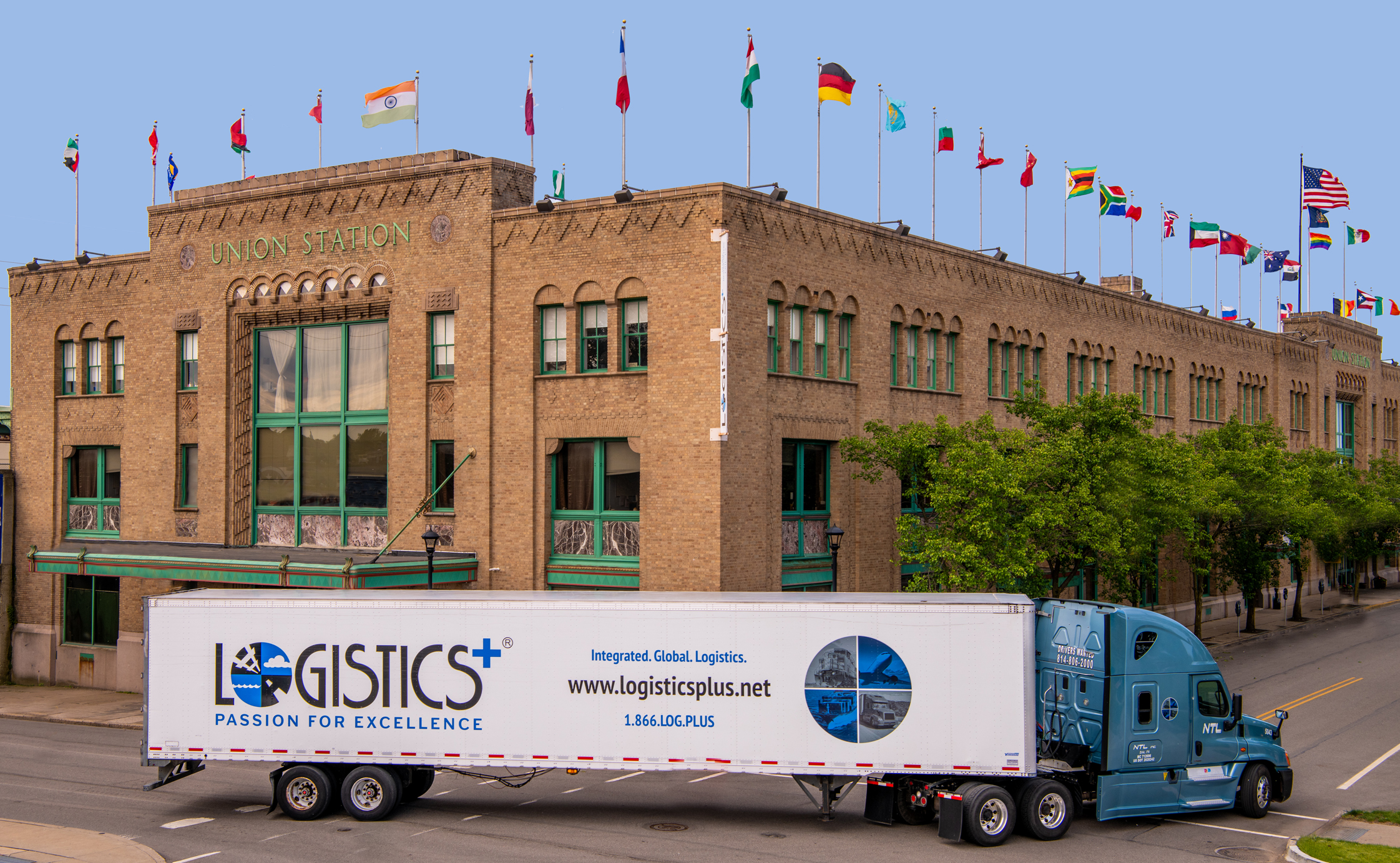
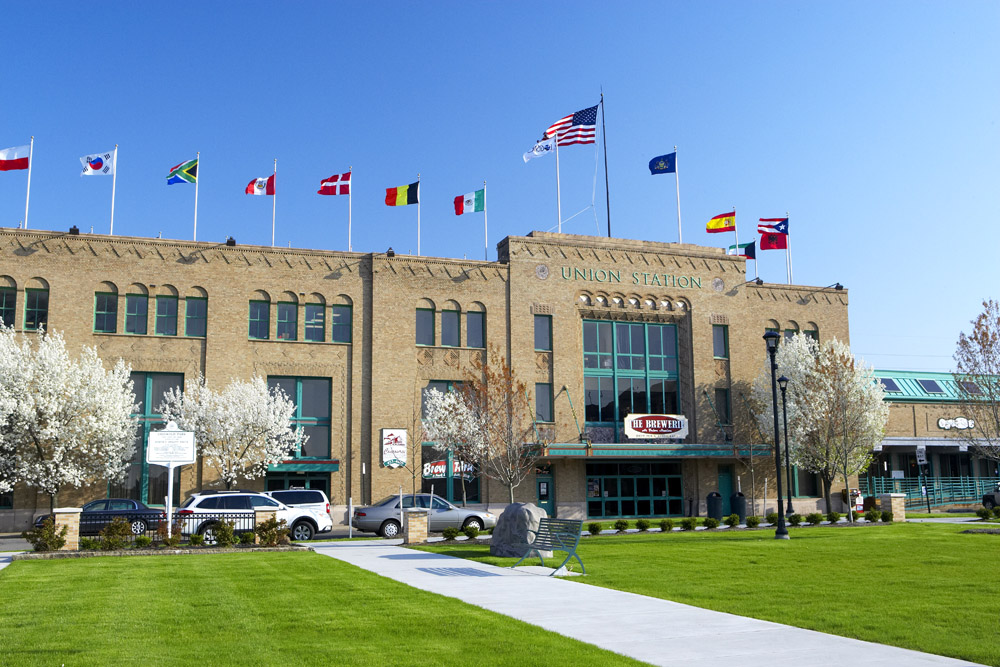
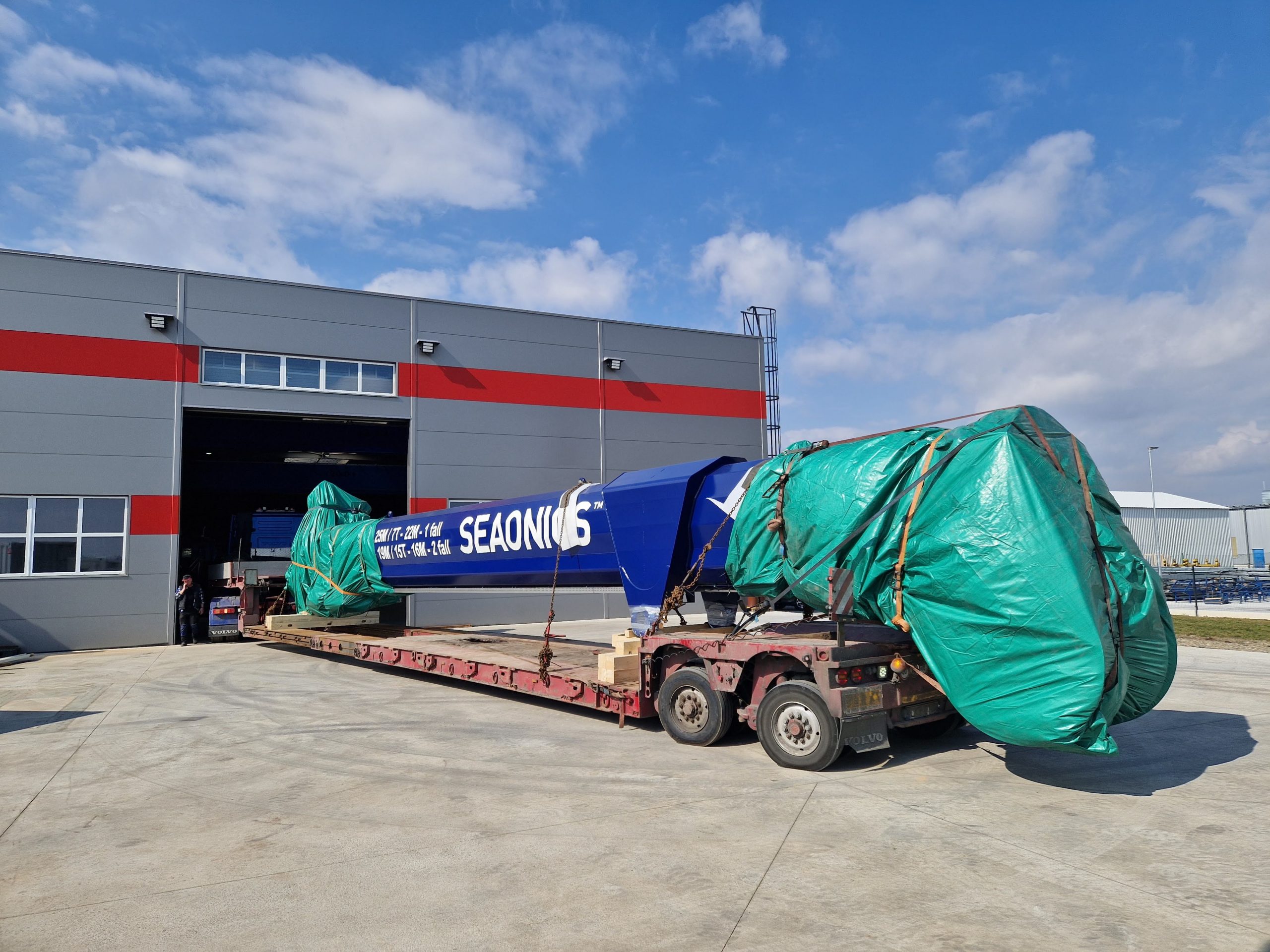
by logisticsplus | Mar 24, 2023 | News
The Logistics Plus (LP) Poland Project Cargo team successfully completed an offshore crane project from the Czech Republic to Norway. The shipment consisted of several pieces, all of which were loaded onto three over-dimensional trucks in the Czech Republic. They were transported from the factory to a nearby port, then loaded onto a vessel for transport across the Baltic Sea to Norway. The offshore crane prototype was transported from the factory to its final destination in four days.
- The main boom measured 21 meters long and 4.1 meters tall
- The pedestal measured 3.9 meters wide and 4.1 meters tall
- Each piece was loaded onto low-bed extendable trailers
Photos from this project can be seen below. Congratulations to our Poland team on another successful project!
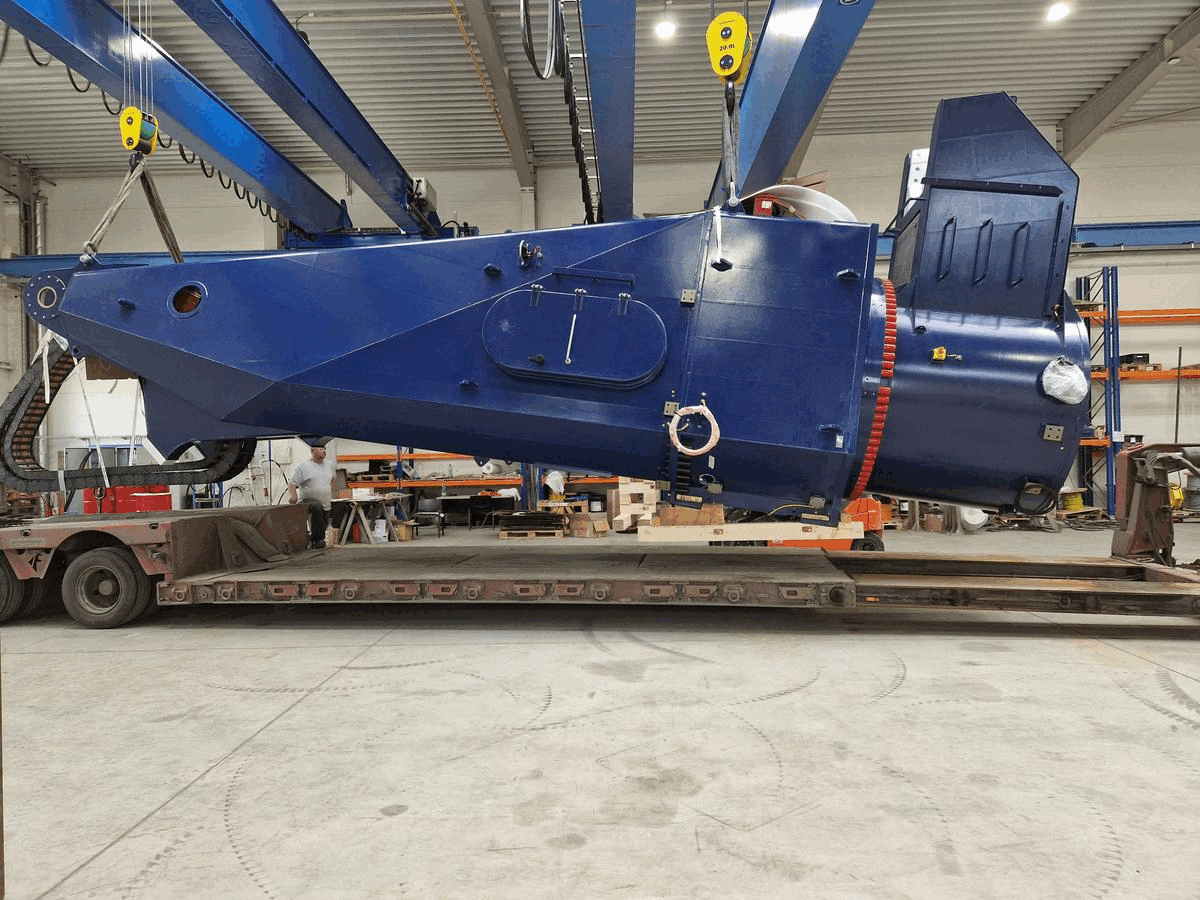


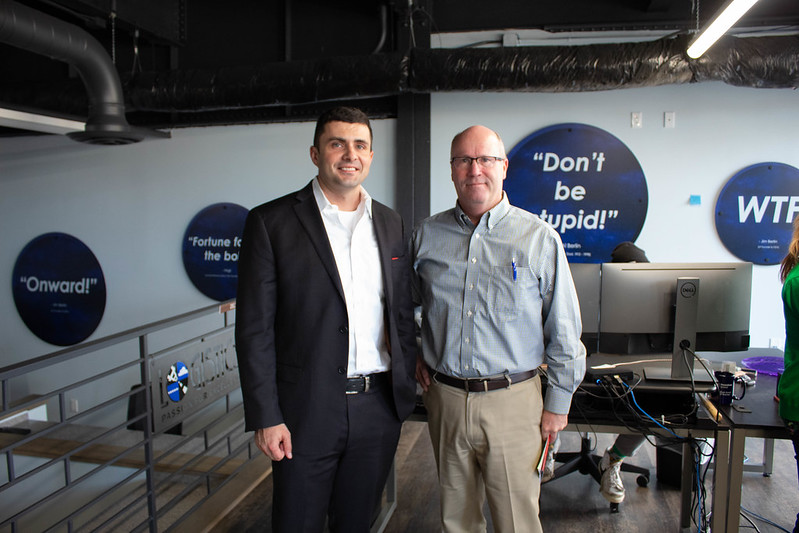
by logisticsplus | Mar 20, 2023 | News

(Click to view the Erie Forward brochure)
Logistics Plus was the proud host of the latest Erie Forward Meeting on March 16th. The quarterly Erie Regional Chamber and Growth Partnership (ERCGP) meeting was attended by roughly 40 guests, including some of the most prominent business leaders in the Erie region. Yuriy Ostapyak, Chief Operations Officer (COO) for Logistics Plus, gave a short presentation about Logistics Plus and discussed the company’s growth, community involvement, and outlook for the future.
Erie Forward Focuses on Five Pillars for Future Success:
- Existing Industry Support and Entrepreneurship
- Workforce Development and Talent Attraction
- New Business Attraction and Investment
- Quality of Place, Advocacy, and Sustainability
- Regional Competitiveness and Collaboration
Pictures from the March 2023 Erie Forward meeting can be viewed below or on the Logistics Plus Flickr Page.

About Erie Forward
The Erie Regional Chamber and Growth Partnership is leading Erie’s economic evolution. It is time for a new and transformative approach to Economic Development. Erie Forward will be the catalyst for our efforts and regional approach to economic development, talent attraction and development, advocacy efforts, and enhancing our quality of place. The mission of Erie Forward is to enhance economic growth, collaboration, and talent development – building opportunities for all of Erie County’s citizens.


 ERIE, PA (March 30, 2023) – Logistics Plus, Inc., a leading worldwide provider of transportation, logistics, and supply chain solutions, is pleased to announce it has been accepted for membership in the U.S.-Ukraine Business Council (USUBC) by its more than 230 members.
ERIE, PA (March 30, 2023) – Logistics Plus, Inc., a leading worldwide provider of transportation, logistics, and supply chain solutions, is pleased to announce it has been accepted for membership in the U.S.-Ukraine Business Council (USUBC) by its more than 230 members.![]()
 Logistics Plus, Inc. is a 21st-century logistics company that provides freight transportation, warehousing, fulfillment, global logistics, business intelligence, and supply chain management solutions through a worldwide network of talented and caring professionals. Jim Berlin founded the company over 26 years ago in Erie, PA. Today, Logistics Plus is a highly regarded, fast-growing, and award-winning transportation and logistics company. With its trademark Passion For Excellence™, Logistics Plus employees put the ‘plus’ in logistics by doing the big things properly, plus the countless little things that ensure complete customer satisfaction and success.
Logistics Plus, Inc. is a 21st-century logistics company that provides freight transportation, warehousing, fulfillment, global logistics, business intelligence, and supply chain management solutions through a worldwide network of talented and caring professionals. Jim Berlin founded the company over 26 years ago in Erie, PA. Today, Logistics Plus is a highly regarded, fast-growing, and award-winning transportation and logistics company. With its trademark Passion For Excellence™, Logistics Plus employees put the ‘plus’ in logistics by doing the big things properly, plus the countless little things that ensure complete customer satisfaction and success.




 Logistics Plus Chief Operations Officer (COO)
Logistics Plus Chief Operations Officer (COO) 








